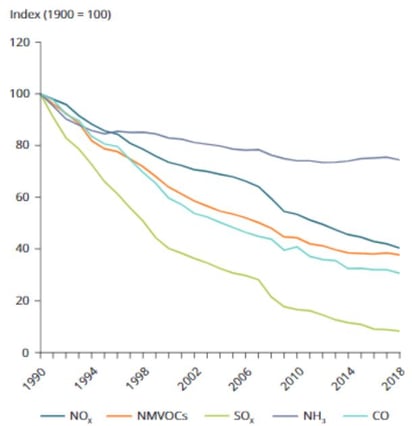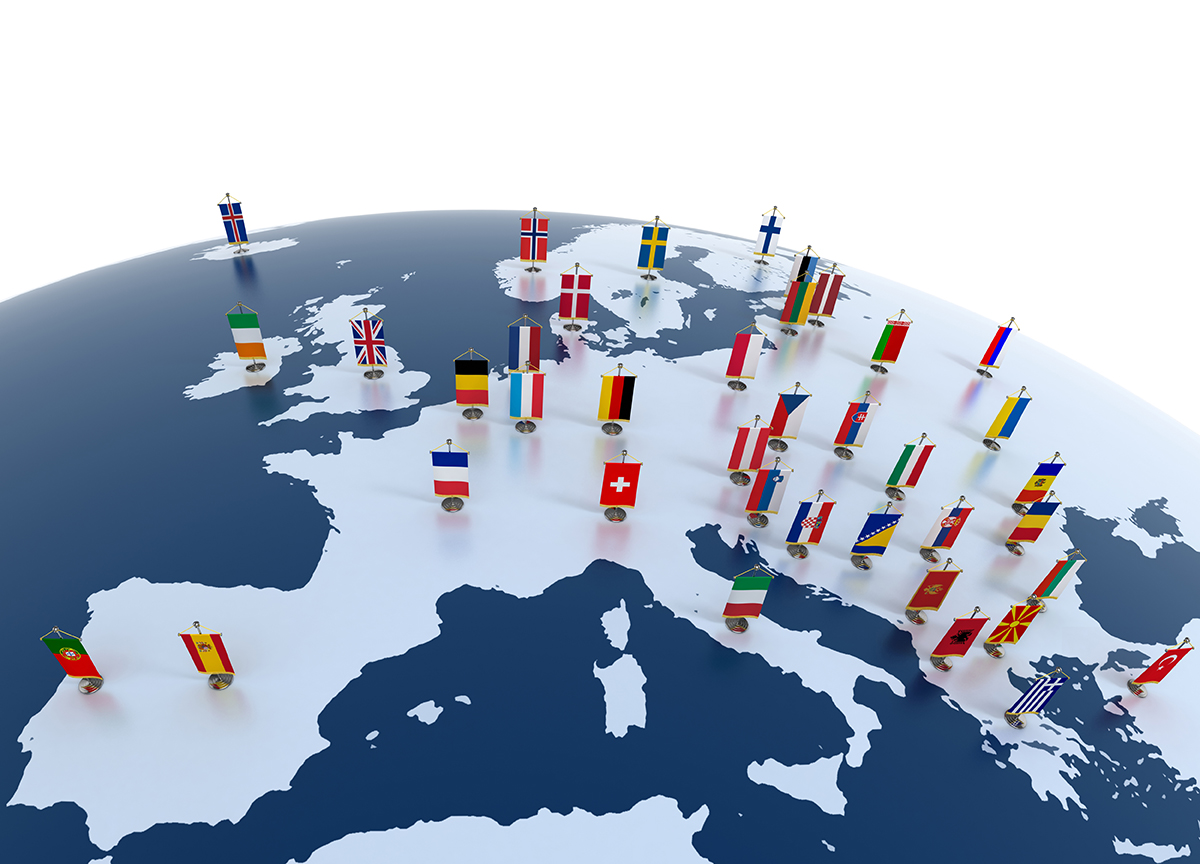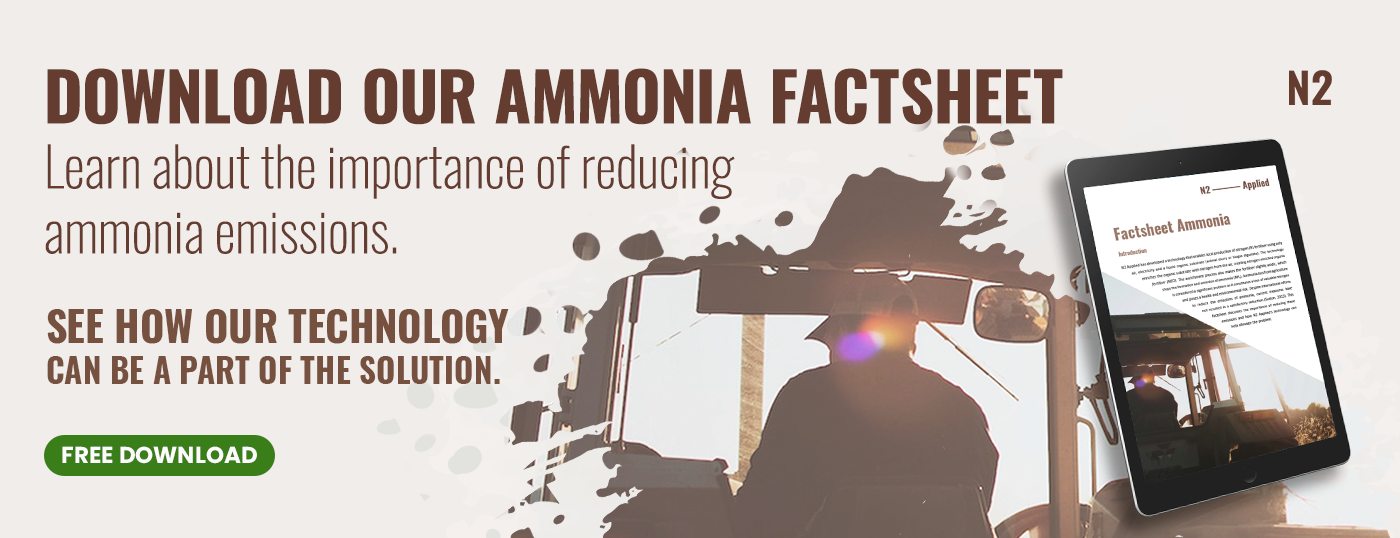Ammonia (NH₃) emissions in the EU increased with 2.8 % from 2013 to 2017. This trend of increasing NH₃ emissions calls for more action.
The EU ambitions in this field are related to the Farm to Fork Strategy, which is at the heart of the European Green Deal aiming to make food systems fair, healthy and environmentally-friendly.
Can the EU turn the tides and how will this affect farmers in the various regions of the EU? In this article we share some background information on these issues.
Increasing Trend in EU NH₃ Emissions
Under the UNECE Convention on Long-range Transboundary Air Pollution (LRTAP), the European Union emission inventory report 1990-2018 was published on July 23rd 2020. This report shows the contributions to NH₃ emissions of all EU Member States. NH₃ emissions increased with 2.8 % from 2013 to 2017. This in contrast to most main air pollutants whose emissions decreased from 2007 to 2018. The National Emission Ceilings Directive sets national emission reduction commitments for Member States in the EU for ammonia (NH₃) and four other important air pollutants.
Member States Are Not on Track to Meet Targets
One of the key messages from the briefing of the National Emission Ceilings (NEC) – published in June 2019 – is that more substantial reductions are needed for all pollutants, if the EU is to achieve its emission reduction commitments by 2030. The main challenge represents NH₃ emissions, for which thirteen EU Member States (Austria, Denmark, Estonia, France, Germany, Hungary, Ireland, Latvia, Lithuania, Luxembourg, Malta, Sweden and the United Kingdom) reported projected emissions above their agreed reduction commitments.
EU-28 emission trends for the main air pollutants:

Large Differences Between Member States
The overview of Member State contributions to EU emissions of NH₃ (table 3.9 on page 51 of the report) shows an interesting benchmark of the share per Member State and the changes in emissions that the various countries achieved over the years.
As an example, the Netherlands managed to reduce emissions during 1990-2018 by 63% and managed to decrease the EU share from 6.8% to 3.4%. This compared to a reduction of 16% by Germany, 9% by France, 39% by Denmark and 14% by the UK. When calculated as NH₃ emissions per 1,000 km2 of country size, the Netherlands end up highest in ranking.

Agriculture Is a Main Contributor of NH₃ Emissions
Agriculture is responsible for 93% of ammonia emissions in the EU. There are five most important key categories that contribute to these emissions:
- Animal manure applied to soils
- Inorganic N-fertilisers (includes urea application)
- Manure management — Non-dairy cattle
- Manure management — Dairy cattle
- Manure management — Swine
The figure below shows the trend over the years:

New Measures to Come?
Each member state must take responsibility for its own measures to reach the 2030 reduction commitments. This has already led and will likely lead to even more strict regulations, depending on the achievements made under the current legislation and restrictions. It seems obvious that member states that have problems reaching the targets under the current strategy, will impose new rules for farmers in order to collaboratively meet the National Emission Ceilings.
The EU Farm to Fork Strategy aims to accelerate the transition to a sustainable food system that should have a neutral or positive environmental impact. Actions proposed cover a broad range of areas, from reducing chemical pesticides and fertilisers to promoting healthier diets, reducing food waste and increasing organic farming. The ambition is to reduce at least 50% of the nutrients lost and achieve a 20% reduction in the use of fertilisers by 2030.
But Is It All Bad? No!
New regulations around cutting ammonia emissions can increase individual farmers opportunities to expand and can even support further growth. Environmental considerations, including those relating to emissions, are already playing a bigger role in planning permission applications. Besides this, emissions of ammonia to air means losing valuable nutrients and are therefore a cost factor for the farmer.
Reduced loss of nitrogen from the farm comes available for plant growth. Keeping the nitrogen in the farm production cycle reduces the use of chemical fertilisers, simply because all nitrogen that is not lost to air or water becomes available for plant uptake. And what is better than using what is already there? There are several technology and farm management strategies that can help reduce on-farm emissions and show a positive value proposition for the farmer. So, it is not all just a newly introduced cost factor.
Will the EU Turn the Tides on Increasing Ammonia Emissions?
Ammonia emissions both represent a threat to human health and to the environment. These topics are getting more and more attention, and the European Green Deal and its Farm to Fork Strategy are clear evidence on where the focus of future policy development will be.
With current rising emissions and current policy developments, it is evident that the EU will increase its efforts to reduce ammonia emissions. And as agriculture is a major source of ammonia, this will influence farming in all member countries. History has shown that tides have turned on other kinds of pollution, and there are many reasons to believe that the EU will turn the tide in this case as well.




